It’s a question we hear often — “Should I use granular shock or liquid chlorine in my pool?” Truthfully, both are great options for quickly ridding your pool of harmful microorganisms like bacteria and algae. But, as with everything, deciding between liquid chlorine vs. granular shock to sanitize your swimming pool involves considering the pros and cons for both. What are the key differences between liquid shock vs. powder shock? Let’s get right to it!
Liquid Shock
Sodium hypochlorite, more commonly known as liquid chlorine or bleach, is a common product used for adding chlorine to the pool. Its strength ranges from 5% available chlorine (household bleach) to a 10–12.5% commercial-strength product, often reserved for residential pool use and industrial purposes. It’s worth noting that most household bleach products contain additives, such as scents and colorings, that can be detrimental to your pool. If using liquid chlorine as a shock, the higher potency pool-grade chlorine is the best choice, rather than the household stuff you’ll find at your local grocery store. If you must go the grocery store route, be sure to get unscented, unaltered, regular bleach.
- Pros:
- Chlorine is immediately available.
- Fast-acting liquid does not need to dissolve, allowing it to disperse quickly throughout your pool.
- Leaves no residue behind.
- Does not increase Calcium Hardness or Cyanuric Acid levels.
- Cons:
- Harder to buy and store.
- Short shelf life of 4–6 weeks. Exposure to heat and light will shorten its lifespan.
- Very high pH level of 13.
- Salt byproduct will increase the level of Total Dissolved Solids.
- Splashes may bleach clothing and/or damage skin.
Should You Use Liquid Chlorine?
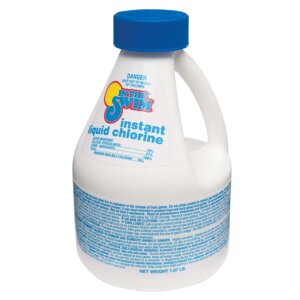
One of the biggest disadvantages of using liquid shock is that the commercial-strength shock is often difficult to find. Typically only pool distributors sell liquid shock. Liquid chlorine has restrictions on shipping, so it can’t be purchased online. The exception here is In The Swim Instant Liquid Chlorine, which actually isn’t sodium hypochlorite at all — it’s calcium hypochlorite!
When using liquid shock, it disperses throughout the pool. Unlike some types of granular chlorine, you don’t have to pre-dissolve in a bucket of water — it can quickly go to work as soon as you add it to the pool. Another advantage of using liquid chlorine is that there’s no gritty or cloudy residue left behind, so you don’t have to brush or vacuum the leftover shock off the bottom of the pool. Just remember, when using liquid shock, be extremely careful while pouring it into the pool. If you get any on your clothes, it will bleach the area white. Take care not to get any on your skin, and wash the area immediately in case of accidental contact.
Always remember that liquid chlorine, aka liquid shock or bleach, is a dangerous chemical. It’s crucial to store it in a well ventilated, cool, and dry area, in a secure container to hold the bottles. Using liquid chlorine regularly will increase your pH, so keep an eye on your pH and Total Alkalinity levels.
Granular Shock
Granular shock and powdered oxidizers come in 4 types and 6 different strengths. When it comes to adding granular shock to the pool, always refer to product label instructions. Some manufacturers will instruct you to add it directly to the pool, while others will suggest dissolving it in a bucket of water first. Carefully following the handling and application instructions will protect you and your pool from unintended consequences.
- Pros:
- Chlorine granules offer a higher potency of Free Available Chlorine.
- Non-chlorine shock allows you to swim as soon as 15 minutes after application.
- Easy to buy and store.
- Online shipment available.
- Bags or buckets available.
- Proper storage provides a longer shelf life than liquid chlorine.
- Several types and strengths to choose from, depending on the needs of your pool.
- Dichlor and chlorine-free shock won’t impact pH balance.
- Cons:
- Some types of granular shock will increase Calcium Hardness or Cyanuric Acid levels.
- Certain applications require pre-dissolving the powder or granules in a bucket of water before adding to the pool.
- May cause temporary cloudy water issues after application.
Cal-Hypo
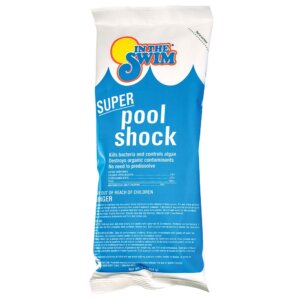
The most common form of granular shock is called calcium hypochlorite, otherwise known by its shortened name, cal-hypo. This type of shock is much stronger than liquid shock, in that it typically offers around 65–70% available chlorine. It’s easy to apply, simple to use, and not too difficult to store.
It’s one of the most popular types of pool shock, because it’s extremely effective, and it won’t add more Cyanuric Acid to the pool. This makes it ideal for pool owners already using stabilized chlorine (such as 3″ trichlor tablets) as a primary sanitizer. Cal-hypo does have an elevated pH level, so it’s especially important to adjust water balance before use, perhaps moving your pH to the lower end of the ideal range.
Dichlor
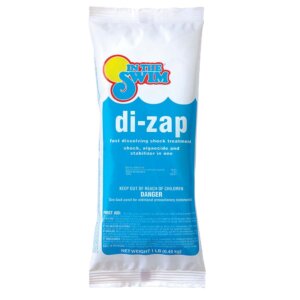
Another popular type of granular shock is sodium dichloro-s-triazinetrione, also known as dichlor. This is a premium-quality sanitizer that is perfect for both swimming pools and spas. Dichlor is a fast-dissolving shock that will help eliminate bacteria and other contaminants from your pool or spa water without leaving much residue.
This type of shock has a near-neutral pH, so it won’t really affect your pH balance in the pool. Granular dichlor isn’t as potent as cal-hypo, but still provides around 56% available chlorine. As we mentioned earlier, dichlor is a stabilized shock that adds Cyanuric Acid to the water. However, unlike cal-hypo, dichlor won’t increase Calcium Hardness levels.
Chlorine-Free

Last, but certainly not least, potassium monopersulfate is a chlorine-free oxidizing shock, which can be used for both pools and spas. The advantage of this type of pool shock is that it’s generally safer than a chlorine-based shock. Non-chlorine shock breaks down non-living organic contaminants in the water, which helps your existing residual chlorine work more efficiently in killing off the living organics in the water (like germs and algae). When using non-chlorine shock, you can usually swim in as little as 15 minutes after shocking the pool.
This type of oxidizer is sometimes abbreviated MPS, and works great with bromine and chlorine alike. It has a neutral pH, won’t increase Cyanuric Acid levels, and it won’t add any extra calcium or sodium to the water. You can’t go wrong with chlorine-free shock. However, since it won’t actually add chlorine to the pool or kill algae and bacteria in the water, you should only add this to your pool if the Free Available Chlorine level is at 2.0 ppm or higher.
What is Shocking the Pool?
What does it mean to shock a pool? The term “shocking” means adding enough chlorine or oxidizer to your pool or spa water to destroy all combined chlorine present and/or eliminate organic contaminants in the water. This usually requires adding 10 times the amount of combined chlorine present (in ppm), also known as reaching breakpoint chlorination. The other reason for shocking the pool with chlorine is to remove algae or bacteria and ensure a safe swimming environment. All of the shock treatments mentioned above can be used for these purposes. The only exception here is chlorine-free shock, which won’t directly affect algae and bacteria, but it can help improve chlorine efficiency by addressing chloramines and non-living organic contaminants.
What’s Better: Liquid Chlorine or Granular Chlorine?
That’s your decision! In the end, the biggest deciding factors are availability, cost, and personal preference. Many pool owners use granular shock because of the ease of purchase, use, and storage. However, some prefer using liquid chlorine when a quick boost of immediately available chlorine is necessary, such as when opening the pool or the day before a pool party. When shocking clean, clear water with ideal Free Available Chlorine levels, using non-chlorine shock is a great way to maintain a healthy pool without affecting water balance.
No matter which type of pool shock you use, it’s crucial to read and follow the product label instructions carefully. If you need to dissolve or dilute your chemicals before adding to the pool, always add chemicals into water, not water into chemicals. Also remember that all types of chlorine react strongly when mixed with other chlorine types, or when exposed to moisture or contaminants. Never mix chlorine types, and keep them safely separated, clean, cool, and dry at all times.



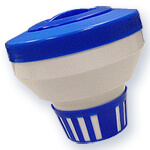
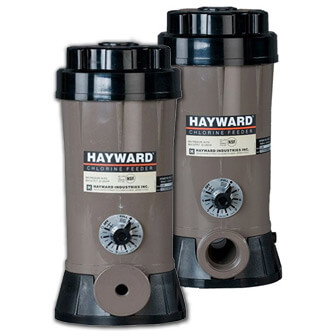

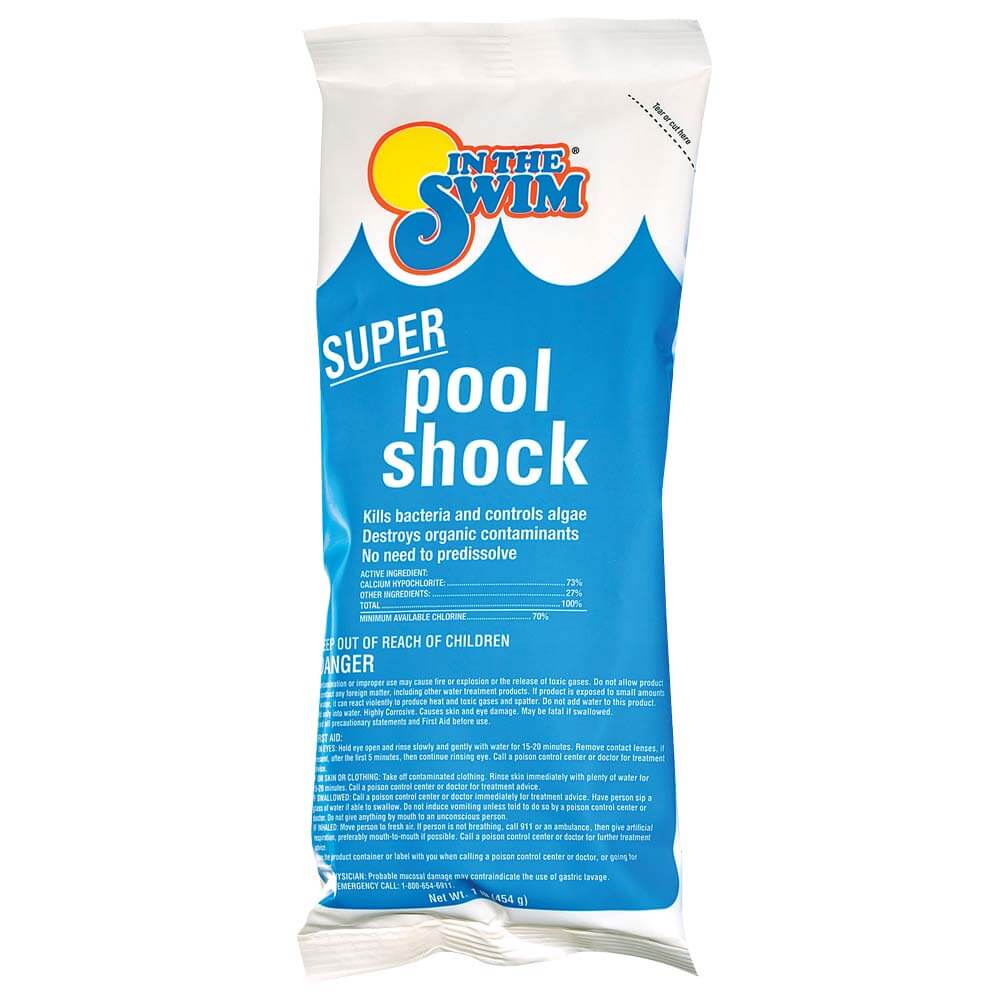



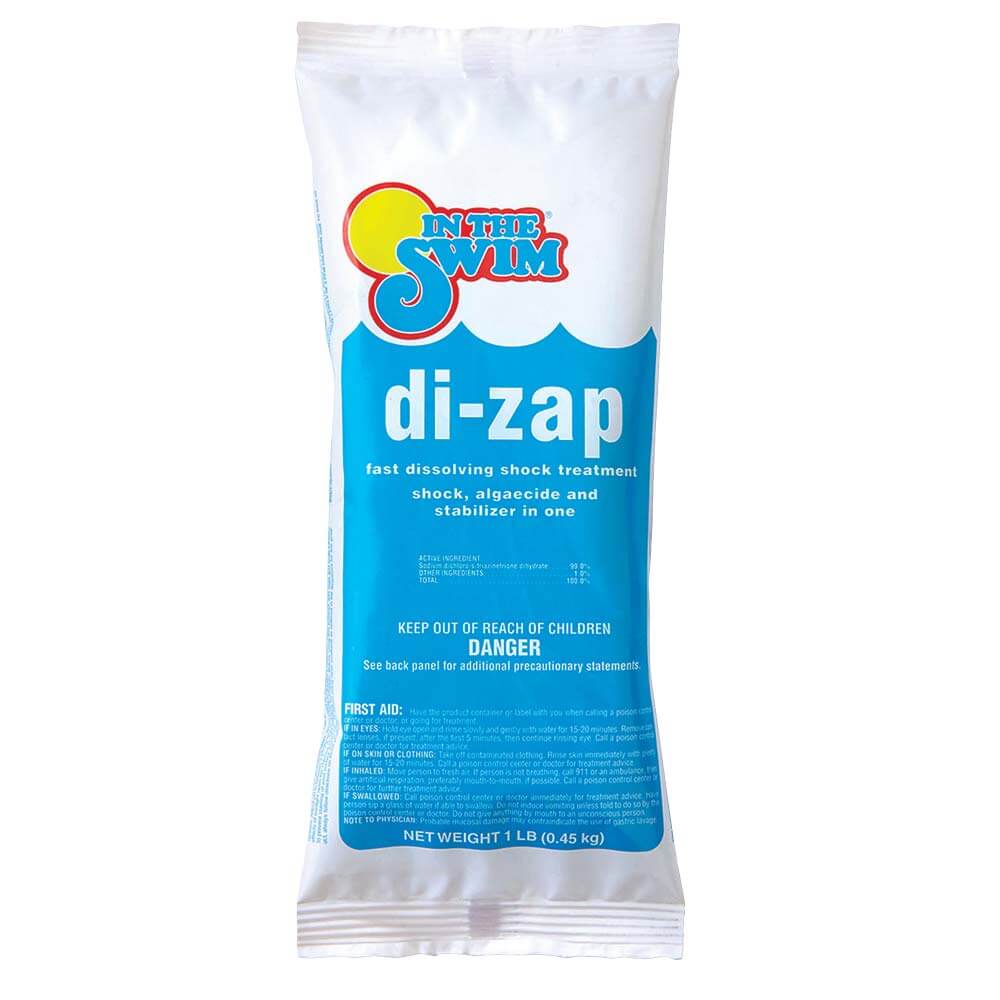
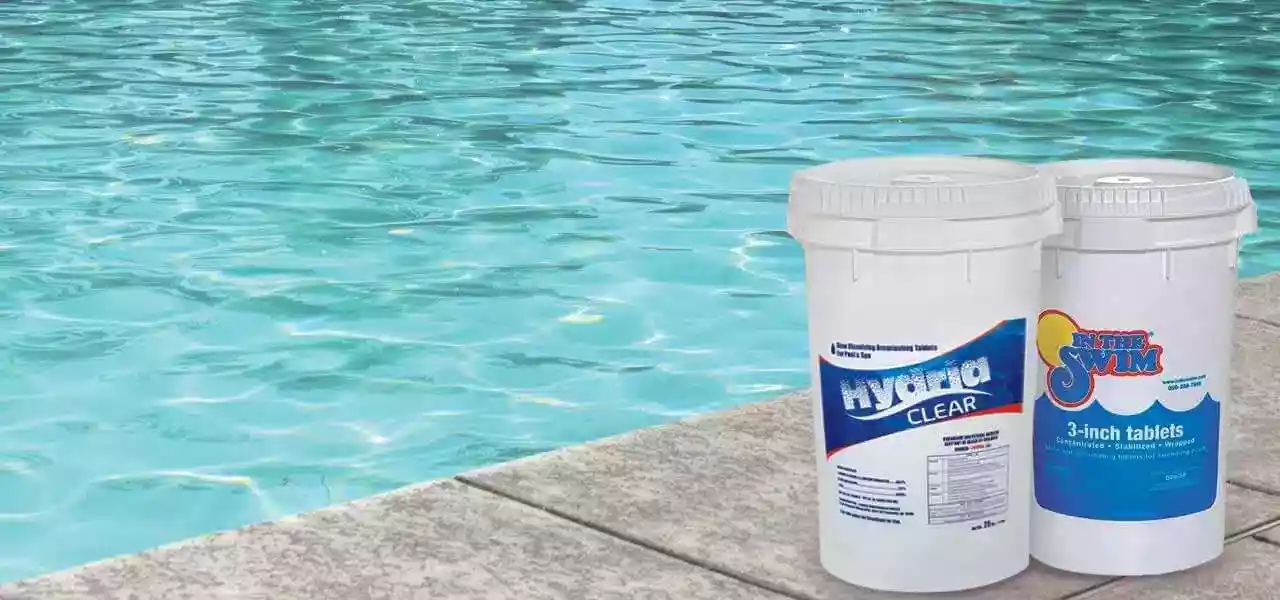
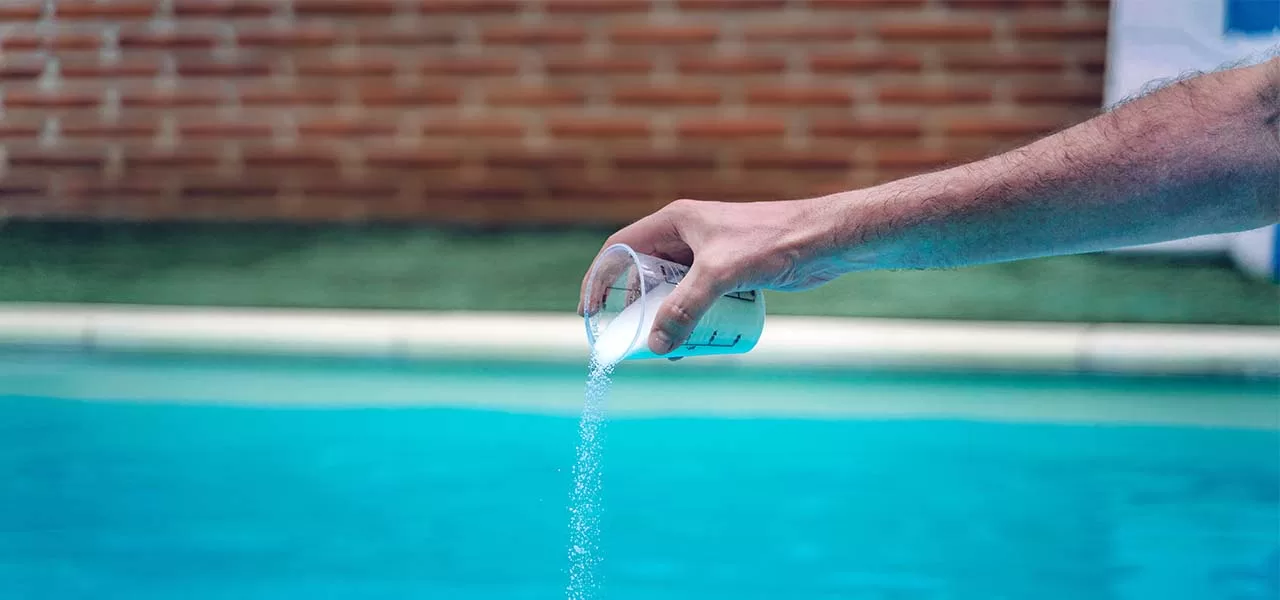
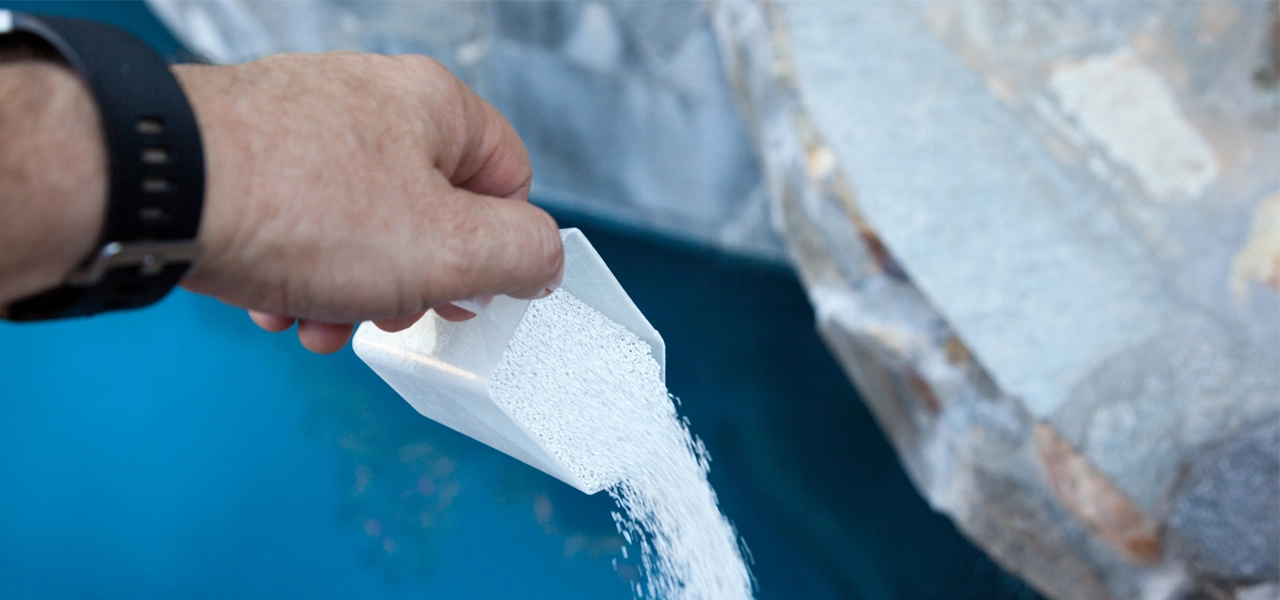
I have been having trouble the last couple of years with white sediment in bottom of pool which appears to be from shocking the pool. I was told it was a by-product when ph is too high. My ph is normal and I still am getting it. Is it the type or brand of shock I am using?
Hi, I call that ‘shock dust’ and I’ve always said that it is the binders that are used, or much of it is calcium. I have not heard it is related to pH level, but just a natural by-product of shock. Some brands that are finer granules, will have less of the shock dust. It seems that cheaper shock has more dust, but that may not always be true. Anyway, entirely normal, and I know of nothing that can be done to avoid it
We had new liner put in so starting all over. Had to completely fill pool. It’s been so long since we originally put it in I don’t remember what we did back then. We Keep shocking (powder) but free chlorine is almost non existent. Would liquid shock work better? You mention bleach? Just plain Clorox bleach? Can’t get any of that now anyway -shelves are empty
Hi Mary, liquid chlorine or granular chlorine both produce the same product (hypochlorous acid) to chlorinate – maybe your shocking powder is non-chlorine shock? Or perhaps it has lost potency if it is old, Or perhaps your test kit reagents or strips are bad. Most people use chlorine tablets to chlorinate daily, slowly released thru the day, which is best, and use the chlorine granular (or liquid) for shock treatment, aka super-chlorination every few weeks.